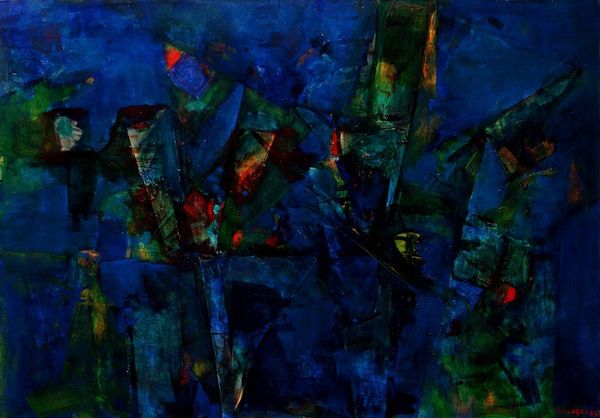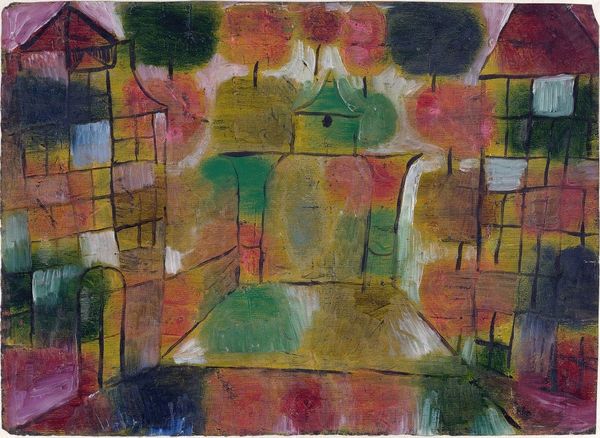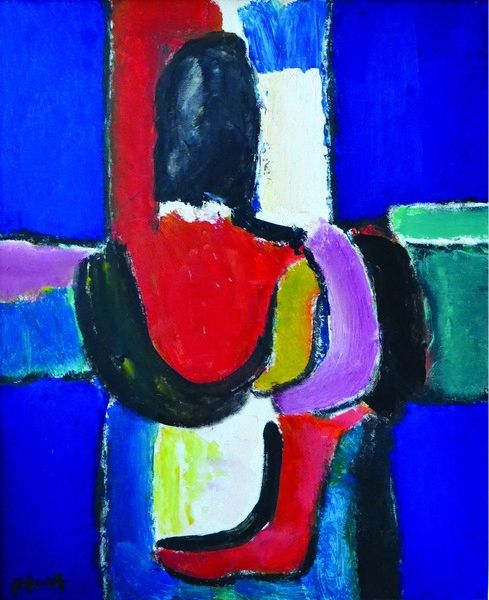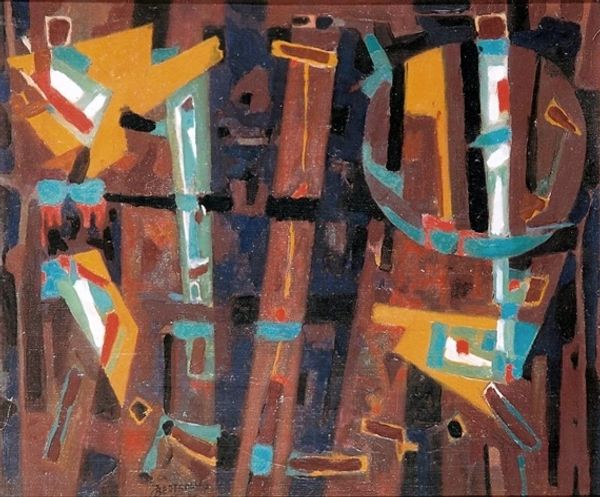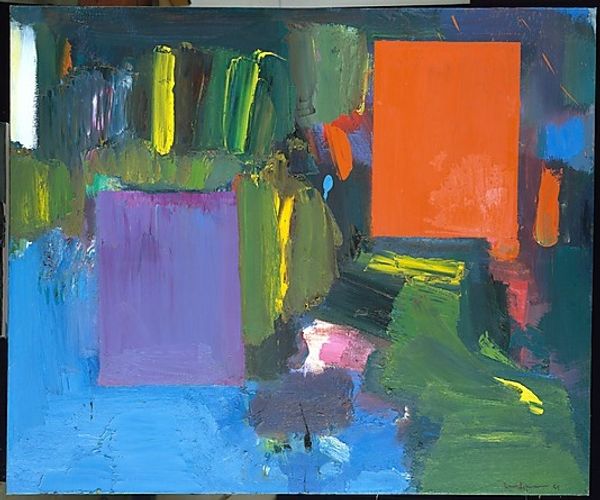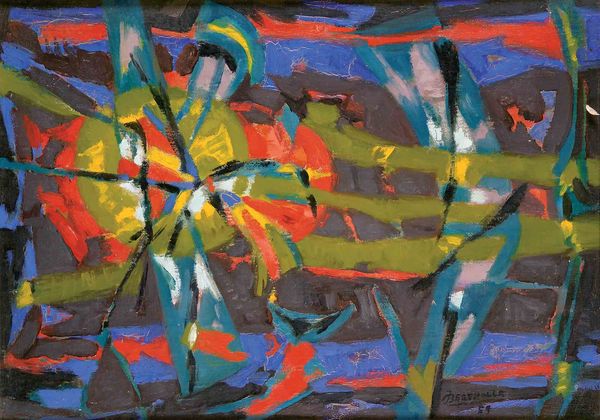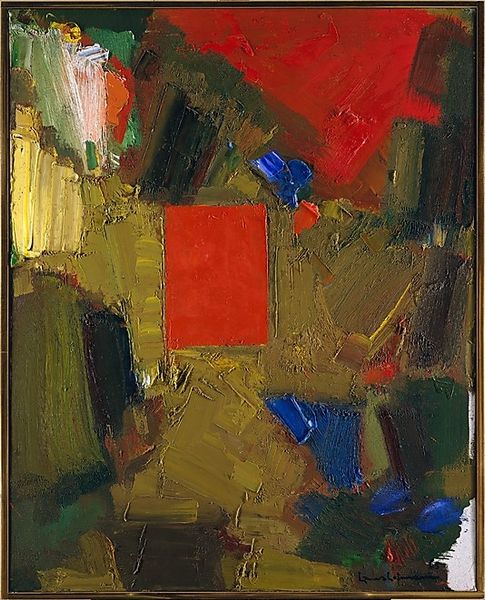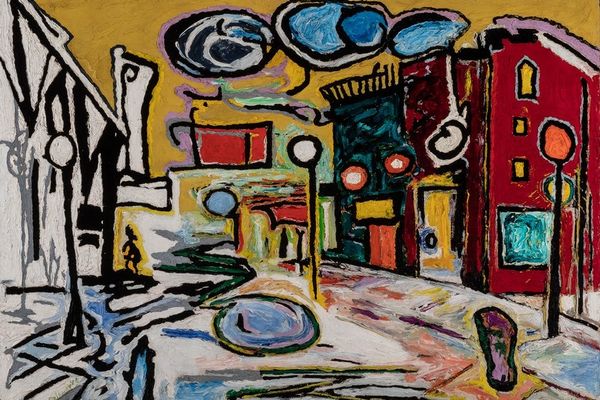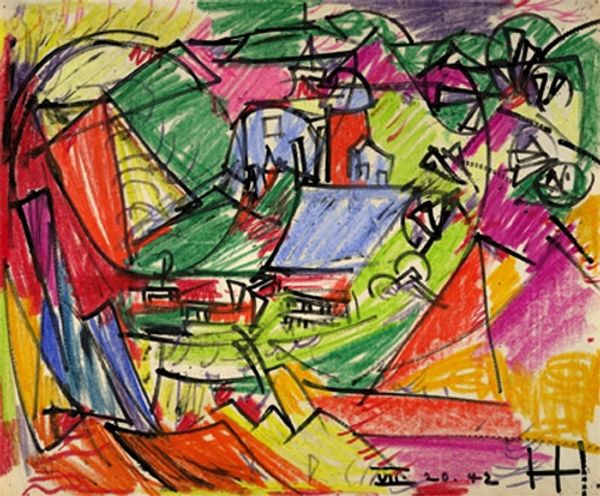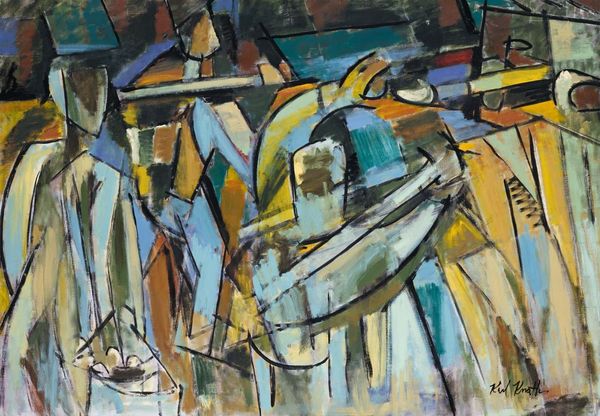
painting, acrylic-paint
#
abstract-expressionism
#
cubism
#
abstract expressionism
#
abstract painting
#
painting
#
graffiti art
#
pop art
#
acrylic-paint
#
form
#
geometric
#
abstraction
#
line
Copyright: Karl Knaths,Fair Use
Curator: Welcome. We are standing before Karl Knaths' "Play of Planes," completed in 1945. Editor: Immediately, the clashing geometrical forms layered across a burgundy ground suggest a visual puzzle, maybe even organized chaos. Curator: Indeed, chaos might be too strong, but let's consider the Cubist underpinnings that structure it. Knaths employs overlapping geometric shapes and fragmented planes. The materiality here is acrylic, applied in ways that give the surface a certain luminosity and texture. Note how black lines attempt to order—or cage—each floating polygon. Editor: Acrylic, which rose in popularity with pop artists like Warhol, is a bit more accessible than traditional oil and that ties into postwar consumption; I would even propose it alludes to a post-war sense of reconstructing a shattered world, but it's not fully cohesive... Curator: A compelling assertion. Post-war reconstruction isn't just about rebuilding; it's also about reimagining visual order and social relationships, which the geometric forms subtly suggest. What semiotic reading could the use of geometric forms suggest? The artist offers various shapes such as squares, triangles and rectangles but they're used outside of any traditional symbolical interpretations. Editor: I'm stuck on that circular accent—like a post-it note added almost as an afterthought; how does it disrupt and alter our engagement with the painting. It stands in total contrast to the angular forms, made further conspicuous via Knaths’ color palette: vivid shades juxtaposed with somber hues. It’s tempting to read the bright blues and greens of geometric shapes against a deep maroon canvas as the promise and hope after a cataclysmic war, or even about the actual labor required to make the work; how acrylic allows layers after layers. Curator: Fascinating interpretation. By deconstructing reality and reforming into abstracted elements Knaths is not necessarily mirroring destruction, rather is highlighting the intrinsic aesthetics, the basic beauty inherent in structure itself. These colors could evoke complex emotions within viewers, such as nostalgia or melancholy, and prompt the questioning and discovery regarding themes of form and shape, integral to Knaths’ work. Editor: This act of abstraction as hopeful reinvention, not just sterile intellectualism. This offers an angle by which the medium and execution offer a visual narrative related to larger postwar concepts like loss or growth in modern consumer culture. Curator: Considering it alongside Abstract Expressionism, we also see how this relates to an engagement with inner life translated to the canvas via line and paint; the raw materials we may engage with everyday Editor: Food for thought, exactly where the painting intended to take us.
Comments
No comments
Be the first to comment and join the conversation on the ultimate creative platform.
